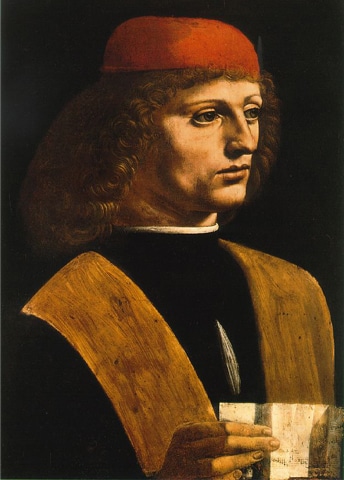
This is an unprecedented event in the history of art. When the Louvre Museum decided to hold an exhibition to mark the 500th anniversary of Leonardo da Vinci’s death, more than 220,000 tickets were instantly sold. Visitors were requested to make reservations in advance, the waiting time estimated at a month or so.
The artist is considered in this country as much a French citizen as an Italian. Born in 1452 in Tuscany, a mountain region of Italy, the painter, sculptor, architect, as well as musician, began his career while still a teenager and led a hectic professional life in Florence, Milan, Venice and Rome before moving to France at the invitation of King François I, for whom he designed and built a palace. As a recompense, he was given a chateau at Amboise, where he spent the final years of his life until 1519. Today, da Vinci is recognised the world over as the greatest artist that ever lived and it is fitting that the event should be held in the greatest museum of the world, showing no less than 160 of his paintings, sketches, sculptures, pen-and-paper drawings as well as letters.
Speaking of da Vinci’s sketches, a number of them were never finished. But experts today believe these works are extremely important if one is interested in learning about the creative initiatives in the imagination of a genius.
These detailed black-and-white configurations of men, women and animals, or of their anatomies, with handwritten remarks in the background, are so intense that they can literally be considered parts of a diary recounting da Vinci’s own life. “They represent his physical as well as spiritual inner tribulations,” says one of the organisers. Another Louvre official describes these illustrations as “practically inventions of the art of our own times and of the trends that have constantly influenced artistic advances for five centuries and will continue doing so.”
The Louvre Museum celebrates the 500th death anniversary of the quintessential Renaissance man
Art critic Jean Leauvergeat adds, “A great number of these masterpieces have come from different collections of the world, largely from Italy and Russia as well as from England, but looking at them opens new horizons in the imaginations of art enthusiasts as they begin to better understand even the permanent pieces in the Louvre, such as ‘Mona Lisa’ or ‘Lady At The Court Of Milan’ [often mistakenly called ‘The Iron Worker’], that they have already seen dozens of times before, but without fully being able to grasp their significance.”

In fact, the most generous of the foreign contributors to the exhibition remains Queen Elizabeth. She possesses more than 600 of da Vinci sketches. When requested by the Louvre officials, she invited them to visit her palace and choose the works they wanted. Unlike other private collectors, she refused to be paid for the 24 borrowed pieces, including ‘Deluge’.
‘Deluge’ proved to be da Vinci’s final sketch. It is a drawing of a catastrophic explosion in which the clouds above a wooded hill swing into a huge circle, with water shooting up and falling back, followed by splintered pieces of blown-up rocks coming downwards from the sky. As in most of his drawings, the artist has put down handwritten notes to explain the end of the universe.

“He was very sensitive to the concept that the world will come to an end one day. The work shows his vision of the elements on which our existence depends, all turning into a chaos,” says Louis Frank, one of the exhibition’s organisers.
“Léonardo da Vinci — Half a Millennium” is being exhibited at Louvre Museum in Paris from December 9, 2019 to February 24, 2020
The writer is an art critic based in Paris. zafmasud@gmail.com
Published in Dawn, EOS, December 22nd, 2019














































